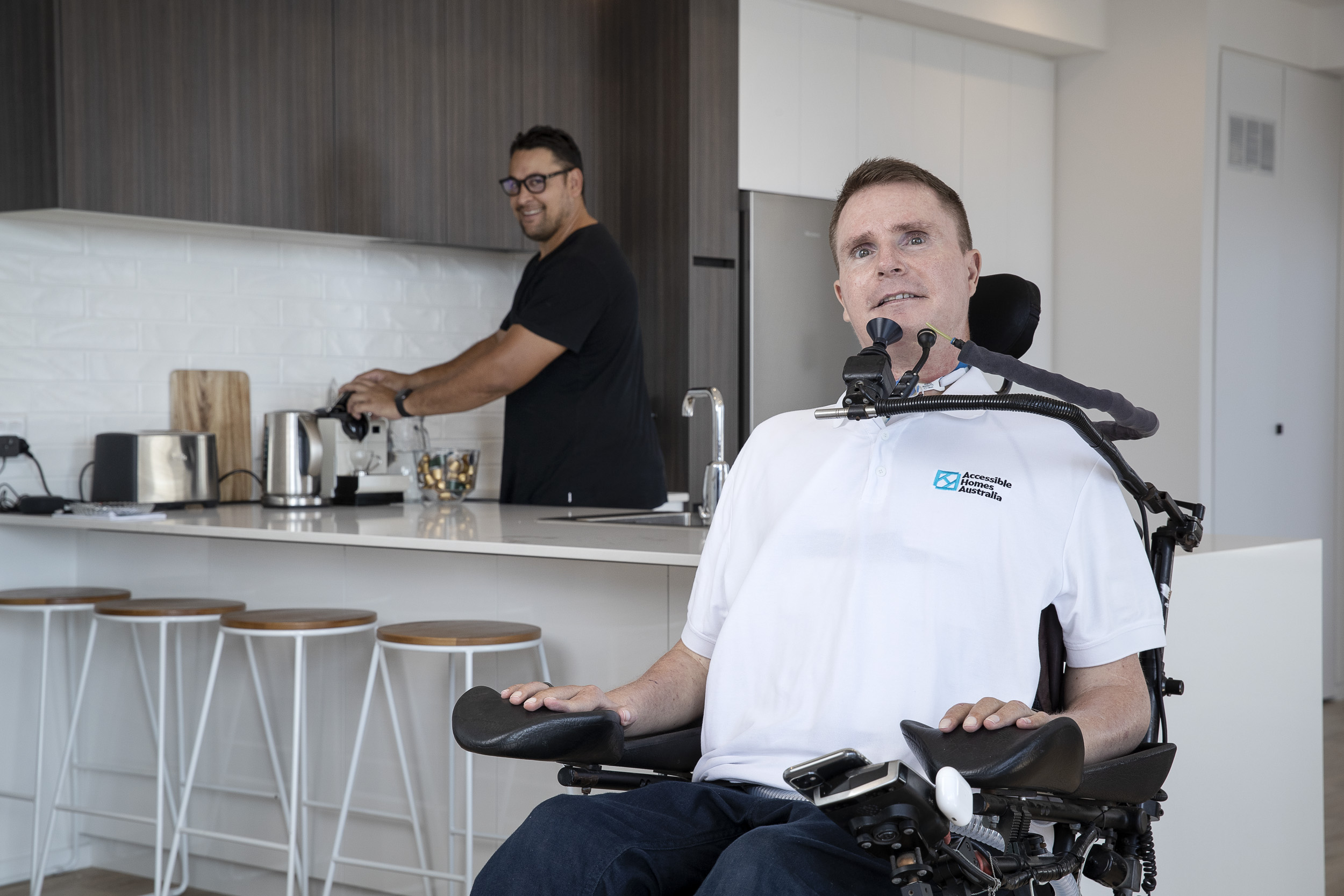For many living with a high needs disability, moving in to a house they can call their own is a life-changing goal.
The good news is, this goal is achievable, with the right support. SDA Services helps people realise their housing dreams by producing quality housing reports for their SDA application, using the correct language and ticking all the boxes needed for a successful submission.
Greg Barry from SDA Services has answered a few common questions about getting the keys to a high needs-friendly home:
How do I know if I’m eligible for SDA funding?
Firstly, you must be a registered NDIS participant to qualify for SDA funding. The next step is to be assessed to see if you meet the funding criteria, which, broadly speaking, can be broken into two categories:
- Extreme functional impairment (limited mobility, self care or self management)
- High need for person-to-person support (with limited access to ongoing informal support) or particular risks associated with a participant’s disability (special accommodation would improve health and limit risk)
My role is to assist people to gather the necessary documents and information from doctors, occupational therapists and family members to compile a report that demonstrates they meet this criteria and qualify for funding.
Why is this report so important?
Funding application documents are rarely straight forward and the SDA is no exception. There is legislation, rules, processes and caveats that need to be met. SDA rules are complex, lengthy and legalistic and they require very careful and close following of the intricate details, investigations and analyses.
We sort and articulate all information in the form of a final report which deals comprehensively and sequentially with each and every relevant element of the SDA rules, and which annexes the professionals’ reports and housing investigations, plans, designs, specifications, locations etc.
Our reports are extremely in-depth. We leave no stone unturned as we feel that if any element of the rules is missed in an application, it is at risk of being refused. Our objective is to maximise the likelihood of SDA approvals for participants.
We adopt the language of the SDA rules and ensure we’ve jumped through every hoop and ticked every box to give participants the best chance of a successful application.
What’s the process of putting the report together?
- We start with an interview. We chat to the participant, their loved-ones and support teams; we read all the information available about the participant’s history and diagnoses; and provide an opinion as to their likely prospects of SDA eligibility.
- Next we gather information on what the participant wants and needs including location, housing type, care and support needs, optimal design and assisted technologies. We also discuss past housing, what has worked and what could be improved.
- We liaise and collaborate with occupational therapists and allied health services and guide them through the elements and language of the SDA rules to optimise the effectiveness of their reports.
- We input each piece of information gathered into a report with great care to ensure we’ve followed every process of the SDA rules.
- We investigate whether there are any suitable housing options available for participants in appropriate locations and provide a report. If there is nothing currently available, we find out if there are any projects on the horizon.
- We are also required to make a case to the SDA on ‘value for money’ of any SDA outcome. In this assessment, we cite the results of academic studies that prove the positive effects that suitable housing with the right design, location and amenity have on future costs.
How long does the process take?
Timeframes vary, but generally speaking, the application process takes about six weeks, with another six weeks for lodgement of paperwork and case assessment.
Once a person is approved, or it is clear their application will be accepted, they can start working with an SDA housing provider, such as Accessible Homes Australia, to determine their preferred accommodation type and location.
My application was a success, what next?
SDA Services works hand-in-hand with SDA accommodation providers, like Accessible Homes Australia, to assist their collaborations with people living with disability with a view to appropriate housing being built for them, recognising their specific needs.
While in a perfect world participants could easily choose the location and housing type they desire, unfortunately there is a shortfall of housing designed to meet the needs of people who require specialist disability housing.
Luckily, groups like Accessible Homes Australia are helping to change this so more people can have the chance to live independently in their preferred location.
What is the cost?
The costs of this reporting (both for SDA Services and other health professionals who’s input is required) are in almost all cases NDIS-funded, and most often from participants’ existing NDIS plan provisions.
Where do I start?
Whether you are or are not yet, an NDIS participant – get in touch with us and we’ll help you get started.
To read more AHA news visit and follow our social media feeds on Facebook & Instagram.

